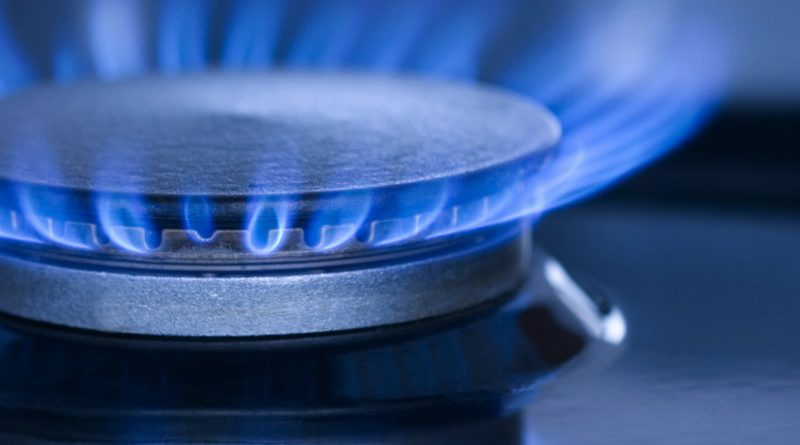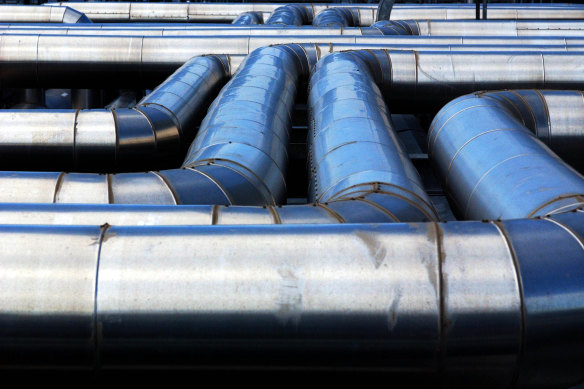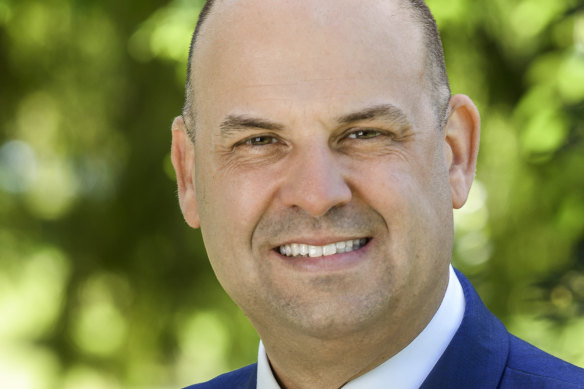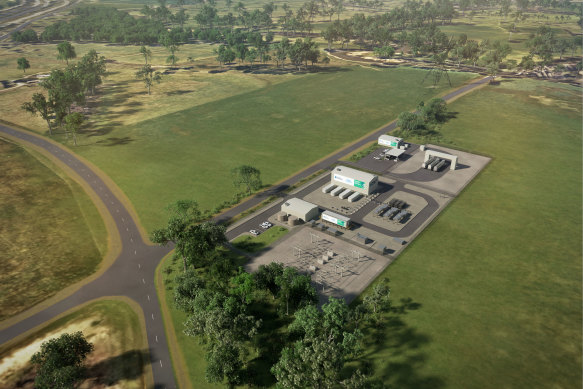Green hydrogen push as industry claims gas ban ‘doesn’t make sense’
Save articles for later
Add articles to your saved list and come back to them any time.
The Victorian government is defending its plan to ban gas connections in new homes as the gas industry says the state is squandering an opportunity to boost the use of renewable forms of the power source, including a hydrogen blend, through its upgraded network.
The Australian Gas Infrastructure Group (AGIG), which owns and operates the infrastructure used to deliver gas to more than 1.4 million Victorian homes and businesses, says Melbourne is one of the few big cities in the world with an upgraded domestic gas network capable of handling green hydrogen, produced using water and electricity from wind or solar.
The Victorian government wants to reduce the state’s reliance on gas, but the industry says it should be boosting the use of renewable gas.Credit: James Davies
It says the industry has already spent about $1.5 billion over the past decade replacing Melbourne’s old cast iron pipes – which are typically seen to be too leaky and unreliable to carry smaller hydrogen molecules – with plastic polyurethane pipes.
Group chief executive Craig de Laine said it did not make sense to ban new gas connections to homes when zero-emissions hydrogen generated using renewable energy could be introduced at little extra cost to taxpayers.
“Contrast this to renewable electricity, which requires tens of billions in additional funding to build new overhead towers, poles and wires, and as we have seen, is dividing communities, farmers and landholders,” de Laine said.
“The investment has already been made in the gas networks – it makes good sense for taxpayers to get the value from that investment and that asset, and continue to use it for decades to come.”
Australian Gas Infrastructure Group chief executive Craig de Laine says Melbourne’s domestic gas network can handle renewable hydrogen.
But Energy Minister Lily D’Ambrosio disputed the claim that Melbourne’s upgraded domestic gas network could handle zero-emissions hydrogen at a lower cost to taxpayers.
She told The Age hydrogen would have an important role to play in decarbonising the energy system, particularly for industry and commercial transport, but only where there was no efficient electric alternative.
D’Ambrosio said there was a “large and growing body of evidence” that hydrogen-to-the-home was not a cost-effective or practical alternative to natural gas.
“This view is backed by dozens of independent studies,” she said.
Former chief scientist Alan Finkel also said that using hydrogen in the home for heating and cooking would be unlikely to be competitive with electric heat pumps and induction stoves.
“I don’t see hydrogen being used in the reticulated gas system for home heating or home cooking because of the expense, the difficulty, and just the slowness with which the industry has moved,” he said in a recent interview.
“At the same time, the electricity substitution industry through heat pumps, and induction stoves, they’re kicking goals.”
The industry is arguing that hydrogen can be delivered over the same network as natural gas. It says hydrogen, which can be separated from water using electricity, is already being used to make “blended gas”, which is 10 to 20 per cent less emissions-intensive and does not require households to switch or upgrade existing appliances.
But the gas infrastructure group claimed that over time, with relatively minor upgrades, Victoria could be using 100 per cent hydrogen for heating and cooking.
The Andrews government has thrown its weight behind a push for all-electric homes, arguing they cost less to run, are more comfortable to live in, and have none of the health risks associated with gas cooking and heating.
Last month, it announced that from the start of next year, planning permits for new homes and residential subdivisions would only connect to all electric networks. It claims residents of a typical new, all-electric detached home with solar will save more than $2200 a year on energy bills.
Modelling undertaken as part of the government’s Gas Substitution Roadmap also suggests that hydrogen production for use in homes would not be an economically viable alternative to heat pumps and induction stoves.
The Australian Gas Infrastructure Group has announced plans to build a green hydrogen plant in Wodonga, Victoria.
It predicts biomethane and hydrogen use will grow through the 2030s and 2040s, particularly for industrial users.
Victoria’s gas sector contributes around 17 per cent of the state’s net greenhouse gas emissions.
The state government has chipped in $12.3 million for AGIG’s recently announced $53 million Hydrogen Park Murray Valley project, based in Wodonga.
The plant will use water and renewable electricity from the grid to produce renewable hydrogen, which will in turn be blended with natural gas at volumes of up to 10 per cent to supply about 40,000 business and residential connections in the Albury-Wodonga region.
The group says the plant, which is located on the Hume Highway, will also be well positioned to supply any future renewable hydrogen refuelling network along Australia’s most significant transport route.
D’Ambrosio has suggested the government is particularly interested in the potential uses of the plant to produce hydrogen for industry, transport agriculture and so-called green chemicals.
The Morning Edition newsletter is our guide to the day’s most important and interesting stories, analysis and insights. Sign up here.
Most Viewed in National
From our partners
Source: Read Full Article





